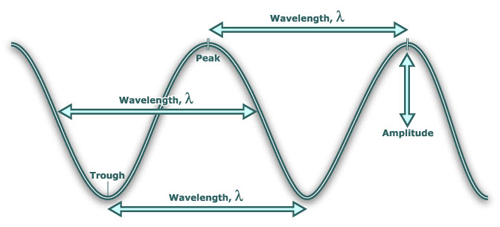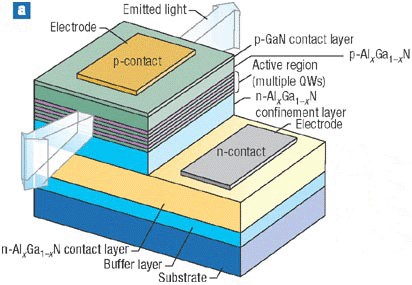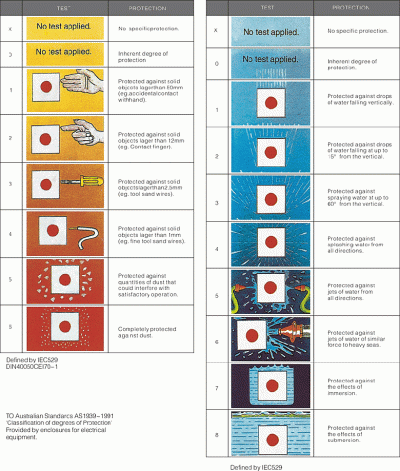In present, the greenhouse artificial light sources mainly are fluorescent lamps, high pressure sodium, low pressure sodium, metal halide lamps act. In recent years, with the successful development of high-power LED, the new energy-saving LED light source also attracted Extensive attention. The ordinal fluorescent lamp provides more green, about 50%, most of the rest are […]

In physics wavelength is the distance between repeating units of a propagating wave of a given frequency. It is commonly designated by the Greek letter lambda (λ). Examples of wave-like phenomena are light, water waves, and sound waves. The wavelength is related to the frequency by the formula: wavelength = wave speed / frequency. Wavelength […]
Luminous intensity is the radiating power of a source of light in a particular direction, weighted with the spectral sensitivity of the eye. Measuring luminous intensity in candela over the entire solid angle in Sterad (SR), one receives the light-current in lumens (lm). In photometry, luminous intensity is a measure of the wavelength-weighted power emitted […]
Luminous Flux (Φv) is energy per unit time (dQ/dt) that is radiated from a source over visible wavelengths. More specifically, it is energy radiated over wavelengths sensitive to the human eye, from about 330 nm to 780 nm. Thus, luminous flux is a weighted average of the Radiant Flux in the visible spectrum. It is […]
Luminous efficacy is a property of light sources, which indicates what portion of the emitted electromagnetic radiation is usable for human vision. It is the ratio of emitted luminous flux to radiant flux. Luminous efficacy is related to the overall efficiency of a light source for illumination, but the overall lighting efficiency also depends on […]
Luminance a measure (in candelas per square metre) of the brightness of a point on a surface that is radiating or reflecting light. It is the luminous intensity in a given direction of a small element of surface area divided by the orthogonal projection of this area onto a plane at right angles to the […]
The lumen (symbol: lm) is the standard unit for the luminous flux of a light source. It is an SI derived unit based on the candela. It can be defined as the luminous flux emitted into unit solid angle (1 sr) by an isotropic point source having a luminous intensity of 1 candela. The […]
LED Light Emitting Diode (LED) is a solid-state semiconductor devices, which can convert electricity directly into to light. LED’s heart is a semiconductor chip, one side of the chip is attached to a stent, the end is negative, the other side connect the positive terminal of the power, and the whole chip is packaged by […]
IP rating also named as INTERNATIONAL PROTECTION, is defined by the IEC (INTERNATIONAL ELECTROTECHNICAL COMMISSION). It’s for grading the lamp in accordance with its dust / object protection level (protect from intrusion of objects) and waterproof level (protect from water and moisture). The objects referred here include: tools, fingers and so on. IP protection level […]
Illuminance is the total amount of visible light illuminating (incident upon) a point on a surface from all directions above the surface. This “surface” can be a physical surface or an imaginary plane. Therefore illuminance is equivalent to irradiance weighted with the response curve of the human eye. Standard unit for illuminance is Lux (lx) […]
- 1
- 2


